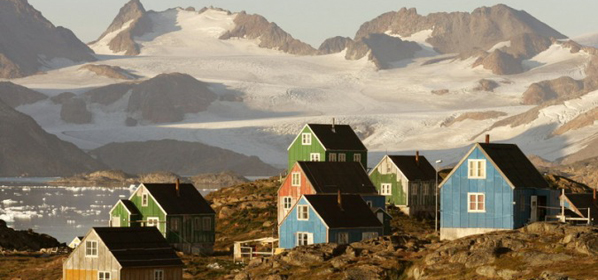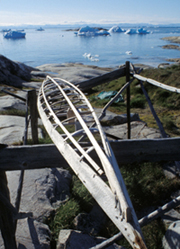Greenland
Land of Ice and People
Home to 57,000 people and 29,000 sled dogs, Greenland is the world’s largest island—a mountainous country the size of the American West situated between the Atlantic and Arctic oceans. Deceptively named, Greenland is largely covered by ice; humans and wildlife alike cling mainly to the ice-free shorelines of the sea and fjords.
Separated from North America by just 16 miles (26 kilometers) of water, Greenland first attracted human settlers from the Arctic roughly 4,500 years ago.
Waves of settlers from Norway and Denmark followed, though many perished in Greenland’s less-than-hospitable climes.
Today, Greenland is a self-governing province of Denmark, but the residents are still mostly (88 percent) Inuit. Danish and Greenlandic Inuit are the national languages, and most residents speak both. Inuit is the source of familiar borrowed words such as kayak and igloo.
No trees grow in Greenland, only short tundra plants that provide food for lemmings, Arctic Hare, caribou, and musk oxen. The rest of Greenland’s wildlife is carnivorous, including the gray wolf, Arctic Fox, short-tailed weasel, and polar bear.
A massive slab of ice—the Greenland Ice Sheet—covers over 80 percent of Greenland. Up to 2 miles (3 kilometers) thick, the ice sheet is heavy enough to have caused the underlying land to sag into a basin more than 1,000 feet (300 meters) below sea level.
The Greenland Ice Sheet is of enormous interest to climatologists. Ice cores drilled a little more than a mile (2 kilometers) down into the ice provide climate data stretching back more than 100,000 years into the past. But current research is equally concerned with the future of the Greenland Ice Sheet. Melting of the ice sheet has accelerated in recent years—the result of a global warming trend that has affected the Arctic especially—and researchers are scrambling to collect climate data that will help predict future melting. The fate of the Greenland’s ice sheet is no small matter: It holds 10 percent of the earth’s fresh water and, if melted completely, would raise the global sea level by 23 feet (7 meters).










